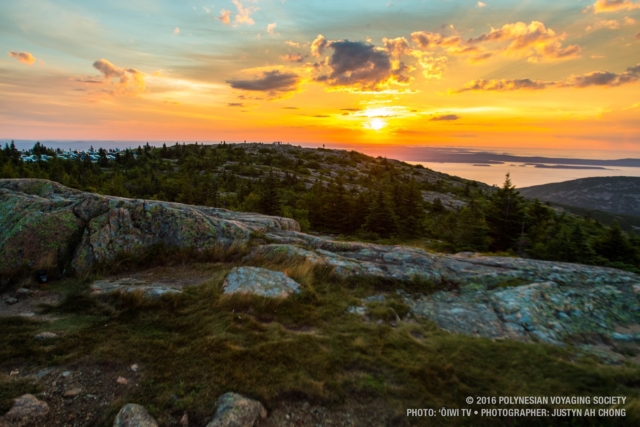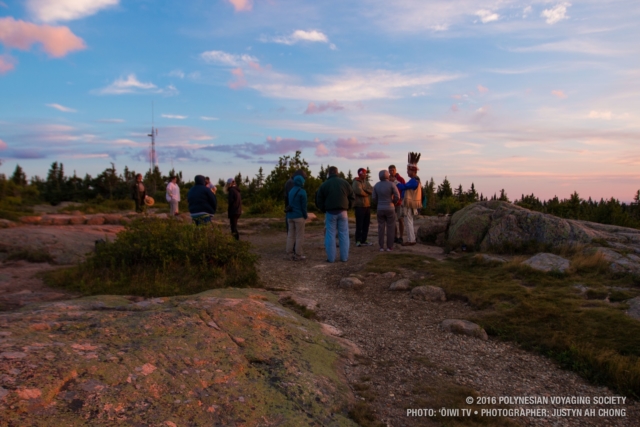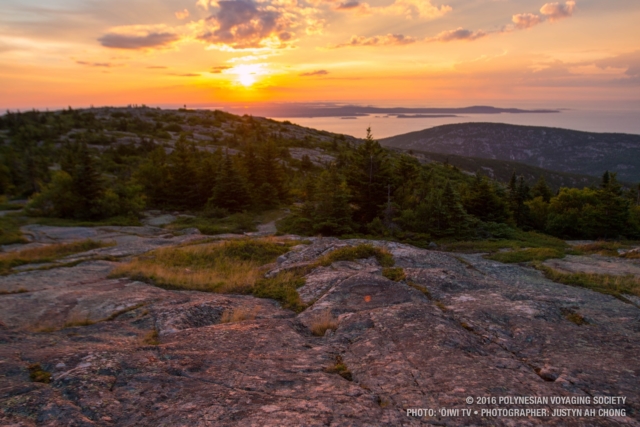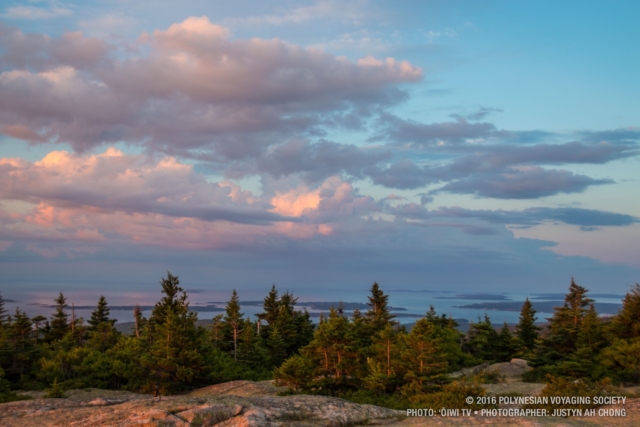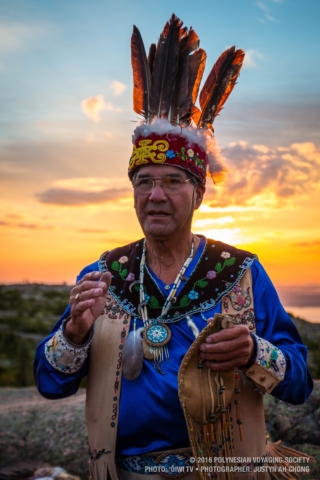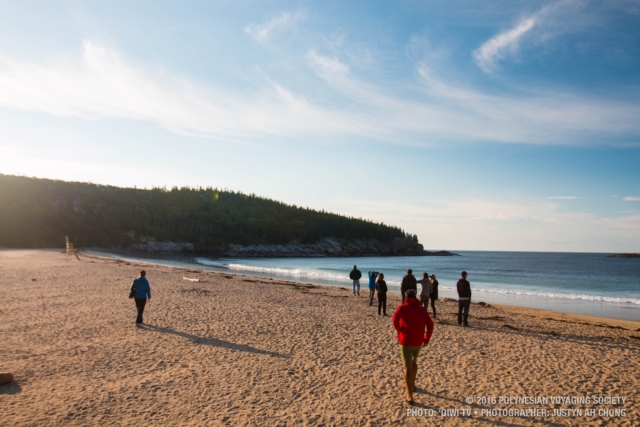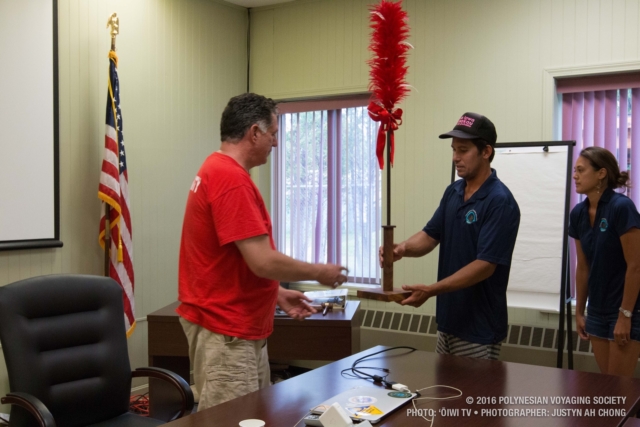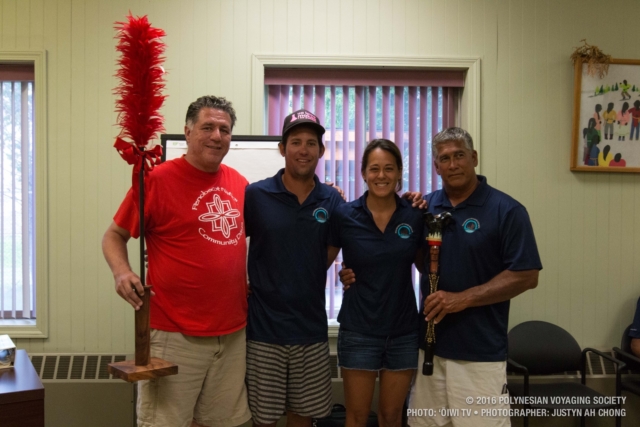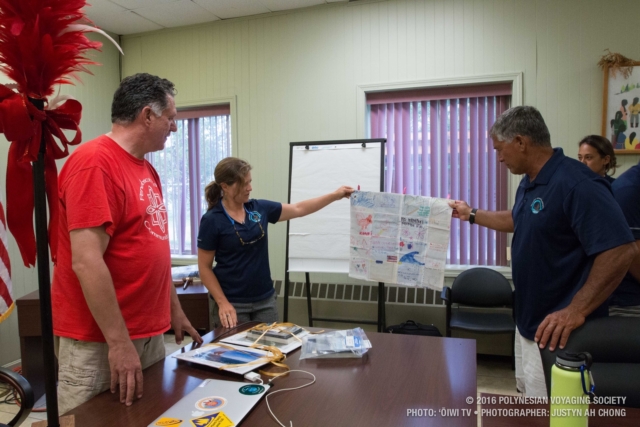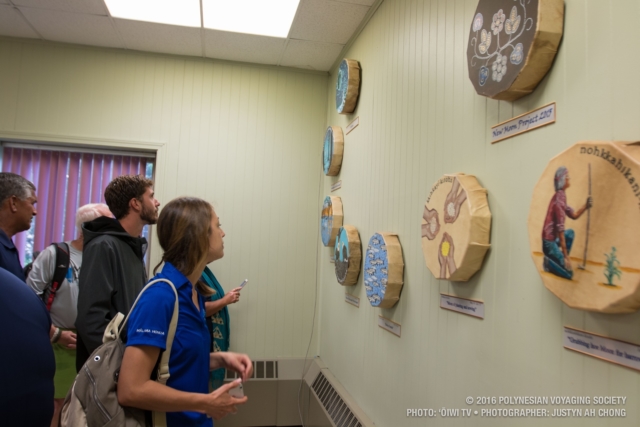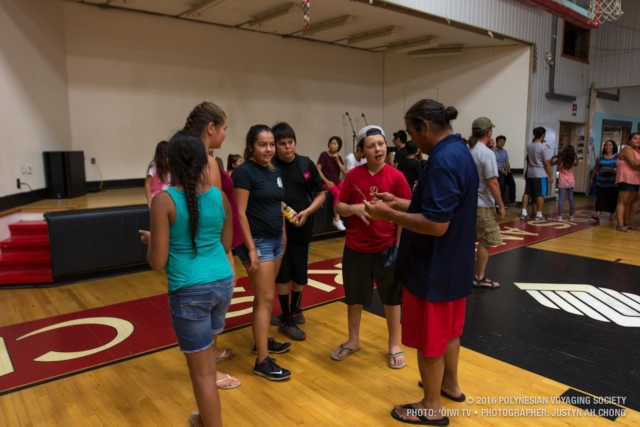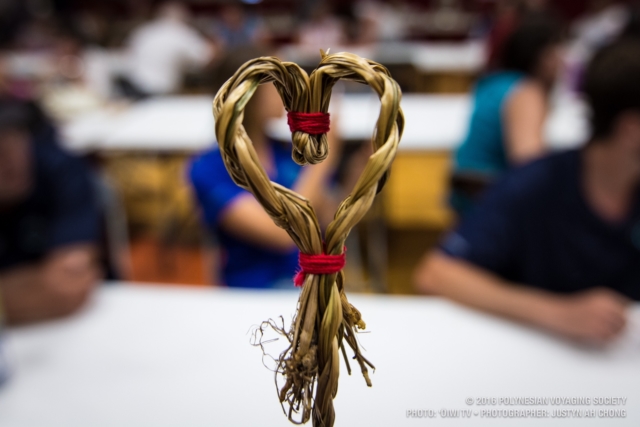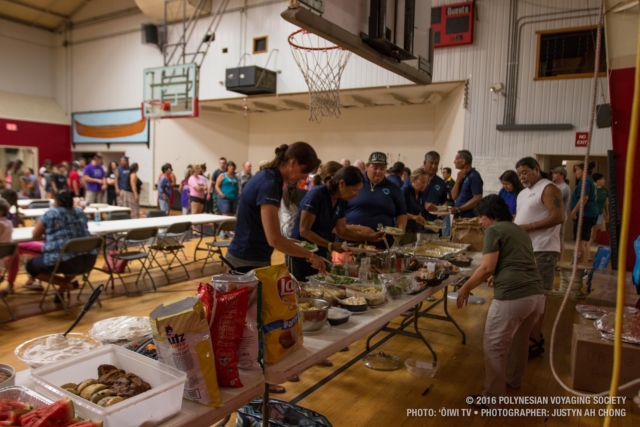
Crew Blog | Maya Saffery: Everyday Acts of Aloha ʻĀina
- Posted on 31 Jul 2016
- In Crew Blogs, Malama Honua Selects
Aloha ʻāina is love for the ʻāina (land), love for your kūpuna (ancestors), love for your culture, love for your lāhui (people, nation). But it is more than a feeling or a belief. Aloha ʻāina needs to be acted upon and practiced over and over in different spaces and contexts so that we are constantly reminding ourselves and others that we as ʻŌiwi (Indigenous peoples) have been here, are still here, and will always be here caring for our places, peoples, practices, languages, and knowledge systems. Aloha ʻāina can reveal itself through large-scale movements but also through everyday acts by individuals and communities that may appear on the surface to be small or insignificant but can in fact have huge impacts on the healing, revitalization, and resurgence of a community.
At its core, I see Hōkūleʻa’s Mālama Honua Worldwide Voyage as a way for us to seek out, recognize, and highlight everyday acts of aloha ʻāina happening in communities around the world so that we can celebrate these actions and find strength in each other’s challenges and triumphs, which will in turn inspire us to continue to practice aloha ʻāina with our own people and places when we return home to Hawaiʻi.
From the moment Hōkūleʻa arrived in Pemetic (Mt. Desert Island), everyday acts of aloha ʻāina were visible all around us. We were greeted on the water by several ah qwee den (traditional birch bark canoes) made and paddled by Wabanaki (or Waponahki), the First Peoples of this place who have been traveling these waterways for generations and are still paddling their canoes on these ancestral routes today. Once Hōkūleʻa was safely tied to the dock, we called out in our Native language to our Wabanaki hosts, introducing ourselves and asking their permission to disembark and come ashore. On the gravel ground of the boatyard surrounded by warehouses, woodworking shops, and boat trailers, we created a ceremonial space where we could share prayers, speeches, songs, and dances in Hawaiian and Algonquin languages that honor this historic coming together of our peoples as well as express our sincere mahalo to all those who have worked so hard to host us in their community.
The next day, we were honored to participate in a sunrise ceremony on the sacred mountain of Wapuwoc (Cadillac Mountain) where Wabanaki (“the people of the dawn”) and Hawaiian prayers, songs, dances and genealogies were offered side by side, each of us honoring and remembering our own kūpuna who have passed but are still with us today. The following day, we were invited to Indian Island, the reservation for the Penobscot Nation, which is a part of the Wabanaki Confederacy. Unlike most of our interactions with the Wabanaki up until that point, there were no ceremonies, no formal speeches, no set programming. But, for me, some of the most moving and impactful acts of aloha ʻāina during Leg 21 were shared and witnessed that day.
While at the Penobscot reservation, we shared a potluck meal with our hosts – one of the most important everyday acts of aloha ʻāina one can do: share a meal together and talk story. What struck me most about that evening was that during the pāʻina (meal), tribal members, mostly youth, would spontaneously come together to drum and sing. There was no program, no introduction, no microphone and speakers, no chairs lined up for an audience to sit and watch. It was just a bunch of ʻŌiwi coming together to drum and sing together while their families and community talked, ate, and laughed together. It felt so normal, like they do this everyday. And even more amazing was that as they drummed and sang, people would just get up to dance around them. From toddlers with grandmothers to teenagers with their friends, there was no shame, no pleading from the drummers to get people to come up and dance. Everyone just wanted to dance together.
This dancing seemed natural for them, but for me it was a unique interaction to witness. I saw it as a time for them to express their identity as Penobscot. No one was staring, gawking, or videotaping. They could practice their culture in a safe place. They created an environment for their children where they can grow up being proud of being Penobscot and expressing that identity through song and dance. By simply drumming, singing, and dancing together they were proclaiming as Wabanaki without hesitation that they, the people of the dawn, are not only surviving but thriving.
While this experience may not have stood out to some, I cannot help but be aware of how other ʻŌiwi express themselves through their songs and dances because that is how I express and practice my aloha ʻāina as a Kanaka (Hawaiian person). As a practitioner of traditional hula, I am constantly mindful of how I can move away from the “performance” of hula where our dances and songs become objects for display and consumption and instead move towards the “practice” of hula as a lifestyle and expression of aloha ʻāina. Ceremony is certainly part of this shift, but it is also through informal, social expressions like the one I witnessed and participated in at Indian Island that help us to truly live our aloha ʻāina through song and dance.
I will definitely take the memory and lessons of that evening back home with me: one person at a time, one family at a time, one community at a time. That is how aloha ʻāina is collectivized and raises the consciousness of a people so that they are inspired to act and bring about large-scale, positive change for their communities.
The only way I really knew how to mahalo our Penobscot hosts that evening was to affirm their aloha ʻāina actions through a mele aloha ʻāina from my kūpuna to say to them, ‘I recognize what you folks are doing and I honor your love for your land, culture, and people.’ Here is part of the mele that I offered:
ʻUmia ke aloha i paʻa i loko
No ke one ʻōiwi ou e Hawaiʻi
ʻEha ai ka ʻili o kūpuna,
ʻO Keawe, ʻo Kalani-ʻĪ-a-Mamao
Ka hua i ka umauma mailani ʻia,
Pāpahi ʻia ke aloha ʻāina
Persist in your deeply held love
For your native sands, O Hawaiʻi
Where the legacy of your kūpuna has been violated
That of Keawe and Kalaninuiʻīamamao
The watchword of the chiefly heart is this:
Wreath yourself in Aloha ʻĀina
(Words by Liliʻuokalani. Translation by Kīhei de Silva)
Help fund the Voyage as we sail the East Coast
Hōkūle‘a’s visit to the eastern United States is a historic milestone in her 40 years of voyaging.
Celebrate with us by pledging your support to the Mālama Honua Worldwide Voyage.








